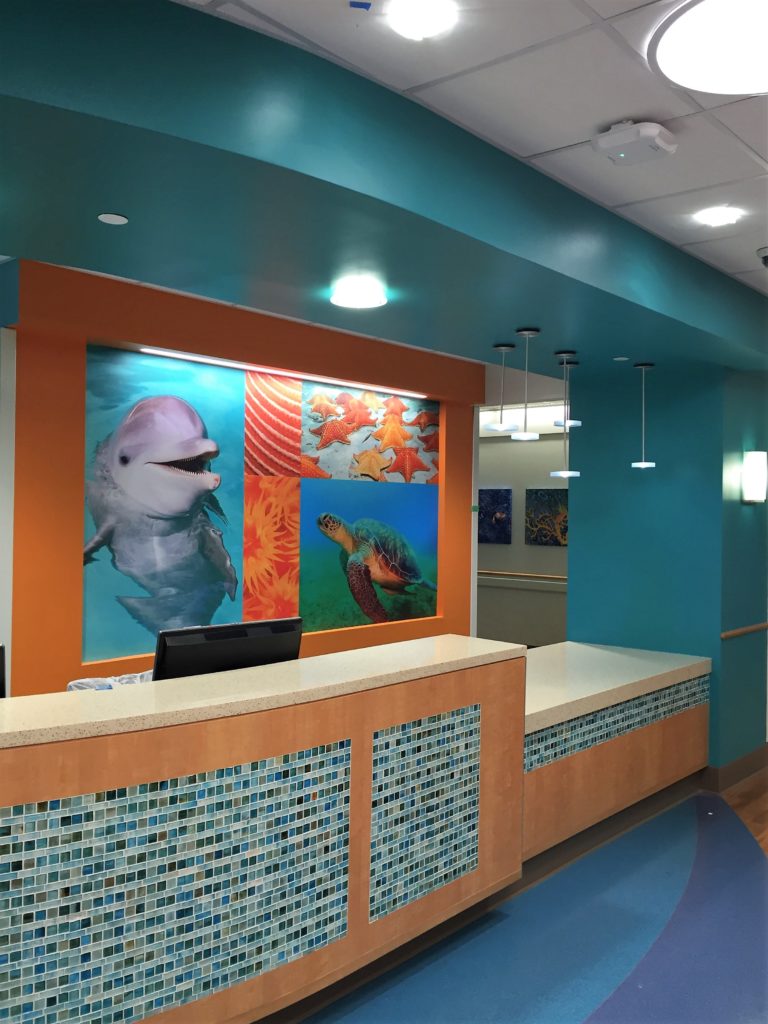How Healthcare Art Can Support Patient-Centricity Goals
Hospital leaders across the country are focusing on patient-centricity and designing their facilities and services to revolve around the patient. They are finding innovative ways to engage patients in their own care and tailoring services to meet the needs of the individual while creating compassionate and dignified human interactions. Healthcare art programs can support this effort by extending the concept of patient-centricity to the visual patient experience.
While each DAS art program is designed to meet the unique goals of the client, they all keep the patient perspective at the forefront. The following are some of the ways evidence-based healthcare art programs can support patient-centricity goals:
1. Collaboration. Part of the emphasis on patient-centricity is a commitment to involving the patient in his or her care. Art programs can engage patients, visitors and the community in the healthcare experience.

Mary Carothers, mixed media
For example, the two-story “Floating Seeds” sculpture at Owensboro Health allowed members of the Owensboro, Kentucky community to interact directly with the creation of the piece. With coordination from DAS, artist Mary Carothers worked with local community members to join in the cast resin process and mentored them throughout the casting sessions. Carothers was careful to reflect the importance of the Kentucky land and history within the sculpture by connecting the seed design to regional farmlands and the flight patterns of migratory birds. By collaborating with the community to design the piece, Carothers was able to unite the theme of the work with the people it was created to serve.
2. Wayfinding. A patient-centric healing environment recognizes and alleviates the traditionally challenging experience for patients and visitors navigating complex hospital hallways to find their destination.

Collage created by DAS
Inova Children’s Hospital in Fairfax, Virginia sought to add navigational clarity by thematically merging three hospital floors together while still retaining individuality for each level. DAS expanded on existing hospital accent color schemes to create a multi-medium experience that clearly branded all three floors with an overall central theme, but referenced specific natural elements on each individual level – sea, sky and land. Adding these elements to each of the three floors provided easier wayfinding experience for patients and visitors as well as visual synergy to guide people through the space.
3. Choice. Patient-centricity offers patients a more active role in their care. Healthcare art programs can support this concept by giving patients a choice in their hospital experience.

Summer Morning, Louis Rys, photography
The Lake Health TriPoint Medical Center in Concord Township, Ohio committed to patient-centricity by providing patients with the choice to customize their surroundings and choose digital artwork for their room. DAS worked with the patient network team to equip each room with wall-mounted televisions, each containing custom channels that featured thirty-five original photographs by local photographers on a digital loop. This technology afforded patients a diverse range of soothing images of local plants and scenery that they could choose to view and could personally connect to during their healing process.
4. Familiarity. Evidence-based design calls for familiar surroundings in the healthcare setting – helping ease anxiety and stress for patients and family members. Art programs are a powerful tool for putting patients at the center of the facility design by creating a familiar environment.

Gordon Campbell, @ataltitudegallery.com
Riverside Shore Memorial Hospital in Onancok, Va, was challenged with creating an art program that involved the community while visually representing the unique landscape and rich history of the region. Textures and colors were selected to authentically represent both the bayside and seaside of the Eastern Shore. DAS invited local artists to contribute art and original photography depicting familiar scenes that closely reflected the community Selected artwork reflects the lifestyle of generations of Eastern Shore residents including iconic waterman and their boats. Striking aerial photography became a hallmark of the hospital’s community art program, visually emphasizing the unique Eastern Shore landscape while reminding patients that they are receiving care close to home – by people who are a part of their community.
Healthcare art programs are an example of how the culture of patient-centricity in healthcare has become a vital part in enhancing the healing process. Providing an environment and informative programs that are supportive to patient healing is instrumental in creating exceptional patient-centered care and is quickly becoming the standard for facilities dedicated to mental and physical healing.


